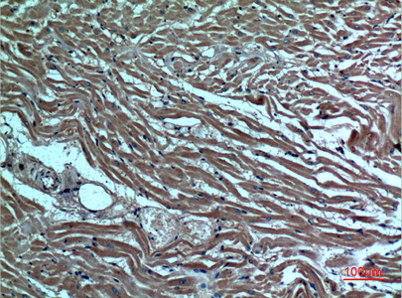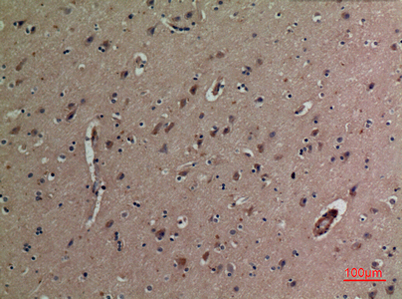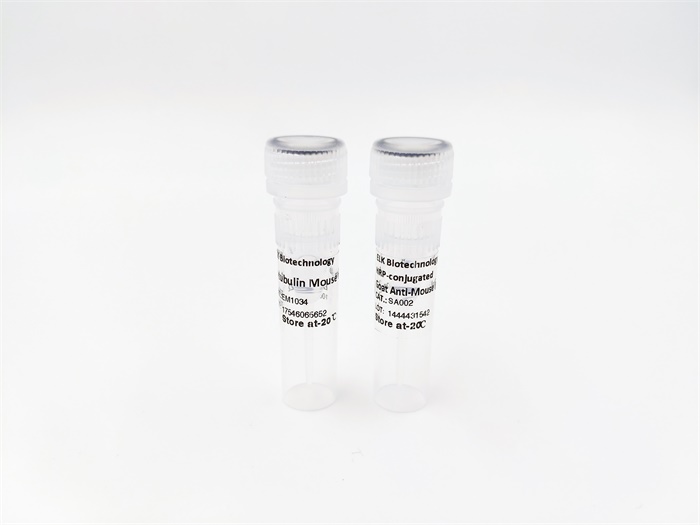| Product name: |
DR3 rabbit pAb |
| Reactivity: |
Human;Rat;Mouse; |
| Alternative Names: |
TNFRSF25; APO3; DDR3; DR3; TNFRSF12; WSL; WSL1; Tumor necrosis factor receptor superfamily member 25; Apo-3; Apoptosis-inducing receptor AIR;Apoptosis-mediating receptor DR3; Apoptosis-mediating receptor TRAMP; Death receptor 3; Lymphocyte-associated receptor of death; LARD; Protein WSL; Protein WSL-1 |
| Source: |
Rabbit |
| Dilutions: |
Western Blot: 1/500 - 1/2000. IHC-p: 1:100-300 ELISA: 1/20000. Not yet tested in other applications. |
| Immunogen: |
Synthesized peptide derived from DR3 . at AA range: 230-310 |
| Storage: |
-20°C/1 year |
| Clonality: |
Polyclonal |
| Isotype: |
IgG |
| Concentration: |
1 mg/ml |
| Observed Band: |
45kD |
| GeneID: |
8718 |
| Human Swiss-Prot No: |
Q93038 |
| Cellular localization: |
[Isoform 1]: Cell membrane; Single-pass type I membrane protein.; [Isoform 2]: Cell membrane; Single-pass type I membrane protein.; [Isoform 9]: Cell membrane; Single-pass type I membrane protein.; [Isoform 11]: Cell membrane; Single-pass type I membrane protein.; [Isoform 3]: Secreted.; [Isoform 4]: Secreted.; [Isoform 5]: Secreted.; [Isoform 6]: Secreted.; [Isoform 7]: Secreted.; [Isoform 8]: Secreted.; [Isoform 10]: Secreted.; [Isoform 12]: Secreted. |
| Background: |
The protein encoded by this gene is a member of the TNF-receptor superfamily. This receptor is expressed preferentially in the tissues enriched in lymphocytes, and it may play a role in regulating lymphocyte homeostasis. This receptor has been shown to stimulate NF-kappa B activity and regulate cell apoptosis. The signal transduction of this receptor is mediated by various death domain containing adaptor proteins. Knockout studies in mice suggested the role of this gene in the removal of self-reactive T cells in the thymus. Multiple alternatively spliced transcript variants of this gene encoding distinct isoforms have been reported, most of which are potentially secreted molecules. The alternative splicing of this gene in B and T cells encounters a programmed change upon T-cell activation, which predominantly produces full-length, membrane bound isoforms, and is thought to be involve |









 Western Blot analysis of K562 cells using DR3 Polyclonal Antibody. Secondary antibody(catalog#:RS0002) was diluted at 1:20000
Western Blot analysis of K562 cells using DR3 Polyclonal Antibody. Secondary antibody(catalog#:RS0002) was diluted at 1:20000 Immunohistochemical analysis of paraffin-embedded human-heart, antibody was diluted at 1:100
Immunohistochemical analysis of paraffin-embedded human-heart, antibody was diluted at 1:100 Immunohistochemical analysis of paraffin-embedded human-brain, antibody was diluted at 1:100
Immunohistochemical analysis of paraffin-embedded human-brain, antibody was diluted at 1:100
 Download ①
Download ①